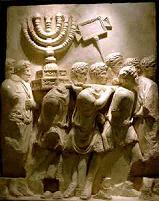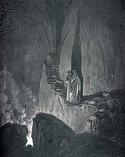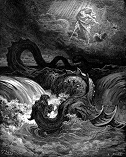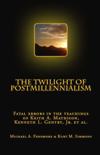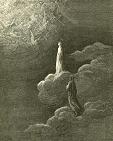Review of John Evans
Prophecy of Daniel 2
John Evans has recently published a new book on the prophecies of Daniel two and the image of Nebuchadnezzar’s dream. This is Evans’ second book on Daniel; his first was entitled “The Four Kingdoms of Daniel: A Defense of the Roman Sequence with AD 70 Fulfillment.” In his newest book, Evans continues his defense of the Roman sequence, but also devotes considerable space to the growth of the Messianic mountain (kingdom), which he equates with the thousand years of Revelation twenty.
Evans and the Roman Sequence
Evans’ greatest contribution by far is his analysis and critique of liberal theologians’ traditional position regarding the book of Daniel. It is clear Evans has invested considerable time in mastering their positions. Because they are morally disposed to overthrow the word of God, liberals deny the prophetic element in scripture (the Bible is more comfortable if it is of purely human providence). They assign a late date to the book of Daniel, claiming it was written during the intertestamental period as a patriotic response to the persecutions of Antiochus Ephiphanes. The very existence and historicity of Daniel is denied. According to liberals, the book of Daniel is little more than a pseudephigraphical forgery, falsely attributed to a fictitious character of the sixth century B.C. in order to clothe it with a prophetic authority. In short, liberals deem the book of Daniel a sort of “pious fraud.”
Evans drives a wooden stake in the heart of liberal interpretation by exploiting its total lack of historical concordance. According to liberals, the four world empires of Daniel two represent Babylon (the head of gold), Media (chest and arms of silver), Persia (belly and thighs of brass), and Greece (legs and feet of iron). Evans refers to this as the “regular Greek sequence.” A variation upon this is the “modified Greek” sequence of Babylon (head of gold), Mede-Persia (chest and arms of silver), Greece (Alexander) (belly and thighs of brass), and the Hellenic kingdoms of Egypt and Syria (legs and feet of iron). The clay mingled with the iron is said to be the political affinity and intermarriages between the Ptolemaic and Seleucid dynasties.
The liberal approach dismisses the Messianic aspect of the vision. Yet, the Stone that strikes the image is clearly Messianic and the kingdom that grows up in place of the four world empires is just as plainly connected with Christianity. It is only by dismissing the divine origin and prophetic aspect of scripture that the obvious reference to Christ can be avoided. The number of times and places the Messiah is referred to as a Stone are multitudinous. Instead, liberals attempt to apply Daniel’s prophecies to Judas Maccabaeus and the revolt that overthrew the power of Antiochus Epiphanes. According to liberals, Judas Maccabaeus is the rock that smites the image. However, Evans points out that this approach quickly loses plausibility. Although Judas Maccabaeus defeats Antiochus Epiphanes, nothing more happens; no mountain-kingdom grows up. Just the opposite, a new world power rises in the West and the Jews come under the dominion of Rome and the nation is destroyed. Of course, if the book is of purely human origin, this is the sort of “prophetic” failure we would expect. But for those that accept the Bible as the word of God, the failure of the liberal approach to accord with history requires that it be rejected.
Evans argues that the image is a type of timeline and that its divisions should bear some relationship to the kingdoms they represent. Hence, the head of gold (Babylon) should represent a period proportionately shorter than the chest and arms; the chest and arms should represent a period proportionate in relation to the belly and thighs of brass, and so forth. In the case of the “regular Greek sequence,” the Babylonian dominion is attributed sixty-six years (605-539 B.C.), but Media only two (539-537 B.C.). Thus, the comparatively smaller head represents a period thirty-three times longer than the larger chest and arms of silver! Moreover, Evans points out that in reality the Median Empire fell to the Persians over a decade before the Babylonian Empire was supplanted. How can the chest and arms of silver be replaced by the belly and thighs of brass before the head of gold that precedes it? Moreover, secular and Biblical testimony is clear that it was Cyrus (a Persian) who overthrew Babylon. Thus, liberal interpretation makes the head of gold give place to the brass, skipping over entirely the silver! In the words of Evans “The historical fact that the Babylonian kingdom survived that of Media is obviously a major problem for the Greek sequence.” Evans’ Roman sequence corrects all this. According to Evans, the time periods allotted the several empires should look something like this:
Head of Gold - Babylon (66 yrs, 605-539 B.C.)
Chest & Arms of Silver - Mede-Persia (207 yrs, 539-332 B.C.)
Belly & Thighs of Brass – Greece (168 yrs, 332-164 B.C.)
Legs of Iron – Rome (119 yrs, 164 B.C. – A.D. 45)
Feet of Iron & Clay – Roman Judea (74 yrs, 45 B.C. – A.D. 30)
Evans argues that this scheme of succession bears a reasonable relationship to the divisions of the image and that its agreement with history makes it the one that should be accepted. Evans argues further that the metals of the image should have an historical association with the kingdoms they represent. In Evans words, “the metals must be understood as symbolizing four specific kingdoms, each of which was closely identified historically with the metal that symbolizes it.” According to Evans, Babylon was uniquely and historically associated with gold, Mede-Persia with silver, Greece with brass or bronze, and Rome with iron. Evans urges further that the clay of the feet and toes represents the Jews. Hence, the iron mingled with clay signifies the Roman rule in Judea beginning with Herod the Great in 45 B.C. Evans has the Stone strike the image in A.D. 30, which he dates as the resurrection of Christ. This event, he feels, is the terminal point of the dominion of the four world empires and the beginning of the dominion of Christ.
Although we fully agree with Evans on the Roman sequence, which is the interpretation understood Josephus and confirmed by the Lord himself, we do not agree that Herod or the Jews figure at all in the imagery of Daniel two (or Dan. 7 & 11), or that A.D. 30 is the point at which the Stone struck the image. Further, we feel the asserted historical association of the kingdoms with their respective metals is in some cases weak. Although Babylon may have been the richest and therefore possessed the most gold, yet the only historical association of silver with the Persian Empire is that it was allegedly used it to pay the army. However, it is probable that each of the empires used silver this way and that Persia was not unique in this regard. In any event, the historical association seems too tenuous for this to be an identifying feature of the Persian Empire. But even if an historical association exists and could be adequately demonstrated, this ignores the symbolical association of the metals. Daniel says that the fourth empire would be “strong as iron” (Dan. 2:40) not that it made the most abundant use of that metal. Thus, it is the inherent symbolism of the metals that should guide us, not an ambiguous historical association. Moreover, why are only the metals historically associated with their respective kingdoms? Shouldn’t the clay have an historical association also? Yet, there is nothing in history that makes “clay” an identifying feature of the Jewish nation.
Evans’ relies instead upon an asserted biblical association identifying clay with the Jews. However, we found this unpersuasive. For example, Isaiah says “we are the clay, and thou our potter; and we all are the work of thy hand” (Isa. 64:8). We would suggest that it would be a case of one’s paradigm driving his interpretation to say that this passage is uniquely applicable to the Jews. Isaiah uses the same parable elsewhere saying “Woe to him that striveth with his Maker! Let the potsherd strive with the potsherds of the earth. Shall the clay say to him that fashioneth it, What makest thou? or thy work, He hath no hands” (Isa. 45:9). The context of this passage suggests that it refers to Cyrus and the Persians whom God would raise up and ordained to release the captives (Isa. 45:1, 13). The point of the parable is the impropriety of men and nations questioning God’s judgment in raising the powers of the earth. God has a purpose and it is not for man to call God to account for his work among the nations. The other passage cited by Evans is Jeremiah’s famous parable of the potter. But this parable is expressly applied to all nations by the prophet, not just the Jews. “At what instant I shall speak concerning a kingdom to pluck up, and to pull down, and to destroy it,” etc (Jer. 18:7-10).
Clearly, these verses provide no basis for identifying the Jews as the clay to the exclusion of other people and nations. Allowing one’s paradigm to drive his interpretation is a common mistake. Attempting to retrofit the “covenantal heavens and earth” model to the Genesis creation, arguing that it represents the covenant creation of Israel, is a recent example among Preterists of this sort of error. Obviously, a “good argument” can always be made, but the test is what did the author intend? It seems fairly obvious that neither Isaiah nor Jeremiah intended to uniquely identify the Jews with clay. Rather, all peoples and nations are clay in God’s hands, and this is precisely how Daniel uses it. In any event, the biblical association is beside the point. It is the historical association Evans builds his case upon and here there simply is none connecting the Jews with “clay.”
Regarding Evans’ assigning the resurrection to the stone smiting the image, we feel the image is clearly eschatological and thus points to the cataclysmic judgments meted out by Christ in the Roman civil wars and related events between A.D. 68-70. It is after all the Roman Empire that is the subject of the vision, not the Jews, who, to our mind, are not directly alluded to at all.
The eschatological nature of the king’s dream has been recognized for centuries among Biblical scholars of every stripe. By making the terminal event the resurrection of Christ, Evans cuts the imagery short of the critical event when Christ fell upon his enemies, grinding them to powder, and transferred the kingdom to the saints (Matt. 21:43, 44; cf. Ps. 2: 8, 9). This is fully corroborated by Daniel seven, which is a companion prophecy to the four kingdoms of Daniel two. Daniel seven depicts Christ’s resurrection and ascension in vv. 13, 14 where one like the Son of man comes to the Ancient of Days, but postpones the time at which the saints obtain the kingdom until the eschatological judgment and defeat of the fourth beast following the persecution of the little horn (Dan. 7:27). Since the judgment of the fourth beast equals the Stone smiting the feet and toes, the terminal event is not Christ’s resurrection, but his second coming.
This is not contradicted by the fact Rome continued to exist and exercise world-government following A.D. 70. Evans correctly points out that the kingdoms continue to exist even though dominion has passed to the next world-power. We agree and this is confirmed in the case of Rome. The image represents Gentile dominion over the world and people of God. The point of the vision is to signify the time when world dominion would turn to the saints through Christ seated upon the Davidic throne. Christ was given dominion in law at his ascension, but it was not until the events culminating in the Roman civil wars and fall of Jerusalem that his enemies were put beneath his feet as a matter of fact. It is to this that the “dashing to pieces” of the image refers. Thus, although Rome continued to exist following A.D. 70, it was a mere vassal state to Christ who rules the nations with a rod of iron.
Evans’ analysis comes up slightly short in Daniel seven, too. Here he adopts the approach that the ten horns are successive emperors; the “little horn” he assigns to Vespasian. But as Evans believes this horn rises only after the others are gone, making it the eleventh in sequence, he is forced to begin his count with Pompey (Pompey, Julius Caesar, Augustus, Tiberius, Caligula, Claudius, Nero, Galba, Otho, Vitellius, Vespasian). However, Pompey was not a king or emperor, but was the general of the republic in the civil war against Julius Caesar. No Roman historian has ever deemed Pompey a king or emperor; all universally ascribe the beginning of the empire to Julius Caesar. Moreover, although Dan. 7:25 says the little horn arose “after” the ten horns, Dan. 7:8 says it rose up “among” them. Thus, the little horn is clearly contemporaneous with the ten horns, even though it makes its initial appearance after them. Our position is that the “little horn” is Nero whose three and a half year persecution of the saints preceded Christ’s second coming. Evans’ position that the time, times, and half a time (3 ½ yrs.) of Dan. 7: 25 refer to Vespasian’s war with the Jews is simply untenable. The rest will have to wait until release of our book.
Despite our difference over some details, we nevertheless agree with Evans’ overall approach and feel he capably defends the Roman sequence in Daniel.
Evans’ Millennial Growth of the Mountain
Evans observes that the Stone that smote the image does not become a mountain-kingdom instantaneously, but “grows up” to fill all the earth. Evans interprets the immanence of the mountain as pointing to the cultural, economic, political, and military dominance of the “Christian” West. Evans does not feel that the millennial paradigms current among many Preterists provide plausible explanations of John’s imagery in Revelation twenty. The probable majority of Preterists interpret the thousand year period(s) of Revelation twenty as symbolizing the forty years from Christ’s earthly ministry to the fall of Jerusalem in A.D. 70. This interpretation was originally floated by Max King and has become an integral part of his theological system. According to King, the “first-fruit” Jews are portrayed in Revelation twenty, living and reigning with Christ though baptism into his death. These Jews then provide “vicarious atonement” to Gentiles and preceding generations of Jews through baptism for the dead. The corporate nature of King’s vicarious atonement through the “first fruit” Jews connects up with his spiritualized, corporate body resurrection (acquittal from the law’s universal condemnation by its annulment), which has led King into Universalism.
Although most Preterists do not subscribe to King’s view about the “first-fruit” Jews, baptism for the dead, a spiritualized resurrection or Universalism, King’s basic interpretation of the thousand years continues to find adherents. Evans opines instead that the thousand years represent the period during which the Stone grew up into a mountain, viz., the Christian West attained world dominance. According to Evans, the Jewish war with Rome preceded the binding of the dragon: “In effect, therefore, the Jewish war of 66-70 entailed a satanic deception of the nations that paralleled the situation described in Revelation 20:7-10, where Satan is released from prison for a short time and the nations are deceived into attacking God’s people.” This idea connects up with Evans’ notion that Vespasian is the little horn that made war against God’s people. How the apostate Jews qualify as God’s people he does not explain. The better view is that the “camp of the saints” in Rev. 20:9 is the church. The “little period” following the binding of the dragon during which it makes war against the saints Evans sees as modern day attack upon Christianity by government, media, academia, and, especially, Islam’s attack upon the West.
Although Evans’ survey of the economic development of the West and his prognostication for the future is admirable and can be read with much profit (we would encourage John to write a series of articles about Islam with specific quotes to the Koran showing its violent and bloody nature), in the end his approach to Revelation’s millennia is untenable. Evans’ admits that the resurrection of the dead was in A.D. 70. But death (Hadean death) was the last enemy (I Cor. 15:26, 55). John thus portrays the resurrection as following the “little season” during which the dragon is loosed and makes war upon the church (Rev. 20:11-15). Daniel does too. In Daniel twelve, the time of “great tribulation” precedes the resurrection (Dan. 12:1, 2). We take this tribulation in reference to the persecution under Nero. John refers to it in Rev. 7:14, where he describes the innumerable crowd from every tribe and nation as those that have come through “the great tribulation.” Thus, the resurrection followed the great tribulation, and the great tribulation was the persecution under Nero. But if the resurrection follows the persecution under Nero, and if in Revelation the resurrection follows the final offensive of Satan depicted in Rev. 20:7-10, then the offensive portrayed in Rev. 20:11-15 was the persecution under Nero, not modern terrorism by Islam.
Admittedly, the idea that the millennia of Revelation twenty represent short periods of time like forty years or less is difficult to reconcile with Western associations attached to such term. However, this overlooks audience relevance; Revelation was not written to modern Western readers. Moreover, applying the symbol of the thousand years to earthly time misses the point at the start and creates the incongruity Evans’ finds so implausible.
In Greco-Roman mythology, the dead went to Hades for a thousand years and then were reincarnated to earthly life.[1] John is writing to Greek and Latin speaking peoples in Asia and the Roman world. He lays before his readers two subjects who undergo death: the dragon and the martyrs. To what would the Greek and Roman mind run? What association would they make of the thousand years? Obviously, they would most naturally associate it with Hadean death. The dragon underwent death by the mortal wound it received to its head (Rev. 13:4); it then descended to the bottomless pit (Hades Tartarus) where it was bound a “thousand years.”[2] Identical language and imagery occurs in both the Old and New Testaments. Ezekiel mentions the armies of uncircumcised nations going down to the “pit” in judgment and defeat (Ezek. 31, 32). Peter mentions fallen angels being bound by chains under darkness until the judgment of the last day (II Pet. 2:4). Both passages refer to Sheol or Hades Tartarus and it is clear that this is where the dragon and beast (Rev. 7:11; 17:8) were symbolically bound. The saints on the other hand have suffered actual martyrdom under the beast and are in Hades Paradise (“Elysium” to Greeks and Romans). The dragon is loosed for a final assault upon the church before being cast into the lake of fire (Gehenna); the saints are loosed in the resurrection of the last day (Rev. 20:11-15). The fact that the dragon is loosed before the resurrection of the saints at the last day proves that the “thousand year” periods are not the same, for the one is shorter than the other. The one marks the period during which the dragon (imperial Rome) is prevented to persecute the saints; the other the period the martyrs (and all the saints) must wait until the general resurrection.
There has been no meaningful interaction with this explanation in the five years since we first published it. The only objection offered to date is that Rev. 20:7 seems to say there is only one thousand year period when it says that after “the thousand years are expired, Satan shall be loosed,” etc. However, while it is easy to mistakenly include the martyrs’ thousand years in this verse, the fact that they are not raised until the general resurrection shows that this is wrong. Further, we have shown that King’s “forty-year-transition” model produces two millennia also. By its own terms, the dragon is loosed before the saints are raised so that the dragon’s thousand year internment is clearly seen to end before the martyrs’ thousand year reign. Indeed, Evans’ model produces two millennia, for he has the saints raised in A.D 70, but the dragon is bound until modern times! In fact, we are not aware of any millennial model that doesn’t produce two separate thousand year periods!
The “forty-year-transition” model of King and other Preterists is identical with Tyconius’ and Augustine’s Postmillennialism compressed into forty years, rather than strung out over several thousand. The basic premise behind each is that the millennia began with Christ’s earthly ministry when he supposedly bound the “strong man” (Matt. 12:29) and ends at his return when the dead are resurrected. Augustine interpreted the reign of the saints as conversion and regeneration by which the church is identified with the reign of Christ. However, Augustine admitted that the thousand year periods of his system do not match up, tacitly admitting there are two millennia in the text.
“This last persecution by Antichrist will last for three years and six months, as we have already said, and as is stated both in the Apocalypse and by the prophet Daniel. Though this time is brief, it is rightly debated whether it belongs to the thousand years during which it is said that the devil is bound and the saints reign with Christ, or whether this short span is to be added to those years and is over and above them. For if we say that it belongs to the thousand years, then it will be found that the reign of the saints with Christ extends not for the same length of time as the binding of the devil, but for a longer time…How, then does Scripture include in the same limit of a thousand years both the binding of the devil and the reign of the saints, if the binding of the devil is to cease three years and six months before the reign of a thousand years of the saints with Christ?[3]
What Augustine is saying here is that the single millennium model cannot be squared, and that people 1600 years ago had noticed that fact! Simple arithmetic shows that the reign of the saints “extends not for the same length of time as the binding of the devil.” If the one is bound a thousand years, and the other reigns a thousand years, yet the one’s thousand years ends before the other, how can they be the same thousand years? This flaw is so basic and so obvious we marvel that more people do not take notice of it. We once made a $1000 challenge if anyone could refute our charge that the King “forty-year-transition-period” model produces two millennia. To date, the challenge has never been met. We would suggest it is time the single millennium model be jettisoned. If Augustine who fathered it noted that it was defective, what possible motive can there be to cling to it still? We would encourage the reader to join Bengel, Wesley and others in the opinion that there are two one thousand year periods contemplated by the text.
Questions of the millennia aside, Evans is correct that the mountain did not grow up overnight, but came on gradually. Assuming “filling the whole earth” contemplates social, economic and military domination of the sort opined by Evans, we would suggest that this was fully in place within less than 500 years of Christ. Christianity quickly became the dominate religion in both Europe and the East early on. Constantine’s conversion to the faith (A.D. 313) put the full force of the empire behind the new faith. After the fall of Rome in A.D. 476, Byzantium, the seat of Eastern Christianity, went on to become the most powerful empire in the world for over 1,000 years (not to be confused with the millennium). During this same period, Christianity also grew up to become the dominant (almost exclusive) faith in the West. The idea there can never be any opposition or reversals does not impress us as being required by the imagery. Christ’s people stray and must be chastened, too. Historically, this has been affected by war and similar catastrophes. Hence, there will likely always be opposition; the idea of a Christian utopia is totally foreign to the text. There is no need or justification to project the thousand years into our modern era. Besides, the context of the new Jerusalem and new heavens and earth are clearly show by Isaiah to follow the fall of the old Jerusalem (Isa. 65, 66; Rev. 21, 22). Hence, it would be anomalous indeed if all of Revelation were fulfilled save a few verses imbedded in the midst of chapter twenty.
Conclusion
Evans’ book does an admirable job explaining and refuting liberal interpretations of Daniel. Despite what we feel are some small defects in his analysis, his newest book makes a valuable contribution to our knowledge of Daniel and helps us along the path toward a more perfect understanding of the book.
[1] “The belief in this reign of a thousand years was long prevalent among the Christians. This period was also in great credit among the Gentiles. The souls of the Egyptians returned to their bodies at the end of a thousand years; and, according to Virgil, the souls in purgatory were exorcised for the same space of time—et mille per annos.” Voltaire, The Works of Voltaire. A Contemporary Version. A Critique and Biography by John Morley, notes by Tobias Smollett, trans. William F. Fleming (New York: E.R. DuMont, 1901). In 21 vols. Vol. 3. Chapter: APOCALYPSE.
[2] The only event in Revelation that even remotely qualifies as wounding the dragon’s head is the collapse of the persecution in Rev. 12, which we hold was the persecution that arose over Stephen. Thus, the dragon is bound beginning with the collapse of the persecution over Stephen, and is loosed at the persecution under Nero.
[3] Augustine, The City of God, XX, xiii; Loeb ed.
To receive Kurt Simmons’ e-mail newsletter, The Sword & The Plow, click the Subscribe link:
All rights reserved.
